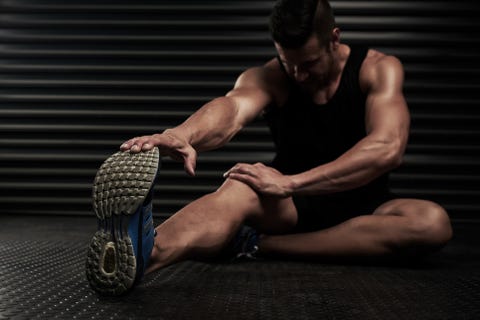
When you finish a hard interval-cardio workout, trainers typically recommend performing a cooldown—a few minutes spent working at an easy pace that allows your heart rate to slowly return to its normal level. After a lifting session, however, most guys just walk right out of the gym (eager to show off their pump, while it lasts).
However, there is a proper way to finish up a strength-training session that both initiates the recovery process and helps improve future performance. You can call it a cooldown, but sports performance coach Sam Pogue uses the term decompression, which better describes the intention. “The muscles get tight from the concentric action of lifting,” says Pogue. That is, the repeated shortening of the muscles on the upward phase of reps leaves the tissues in a tense state. “Decompression exercises help the muscles return to resting lengths,” he says.
Imagine what a workout of deadlifts or shrugs does. If you leave the gym immediately after training them, and go sit at a desk for the rest of the day, you’re just reinforcing tightness in your neck, traps, and shoulders that can lead to injury over time. By taking a few minutes to unwind the muscles, you’ll promote blood flow, increase hydration of the fascia that surrounds them, further increase mobility, and spur the nervous system’s parasympathetic response—the relaxed, “rest and digest” state that induces recovery.
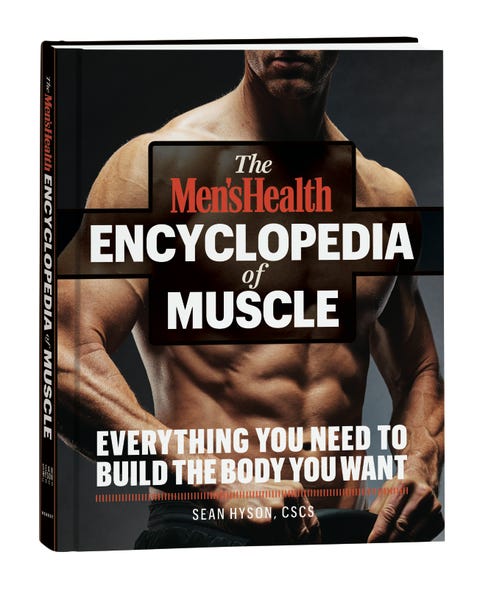
Men’s Health
Order Now
For a full compendium of fitness knowledge, check out the Men’s Health Encyclopedia of Muscle. The volume is chock full of workout routines, helpful training tips, and definitions for just about every gym-related term you’ve ever wanted to know.
How to Cool Down

Getty ImagesDougal Waters
If you’ve been wondering where static stretching (move into a stretched position and hold it, like you did in gym class) fits into your training,—the time is now. A decompression series does involve holding stretches, but probably not the same as you’re used to. For the sake of efficiency, Pogue recommends more “global” exercises that stretch several muscles at once, while also forcing you to focus on stability and good biomechanics. Many of these movements are derived from yoga, and may look familiar to you.
“Your decompression doesn’t have to focus only on the body parts you worked that day,” says Pogue. “It should work on your most-restricted areas.” For most, that’s the hips and thoracic spine (aka the T-spine, mid-back area), he says. “The T-spine’s ability to rotate a affects so much of our movement, whether it’s hip flexion, spinal flexion, or extension.”
Pogue offers the following decompression series, which you’ll find in the Men’s Health Encyclopedia of Muscle, to finish off your workout. Hold every stretch for 15 seconds, breathing deeply in the end-range position. You should feel your body opening up on your exhales, and, as it does, gently try to extend your range of motion. While it’s never safe to stretch aggressively, your body can find greater ranges of motion when the muscles and joints are warm and lubricated. Since your workout brought the heat, stretching is most effective when done right afterward, so don’t skip it. As you become more mobile, hold these positions longer. Stretch one side, and then repeat on the opposite side.
The EOM Post-Workout Cooldown Series
Kneeling Arm Thread
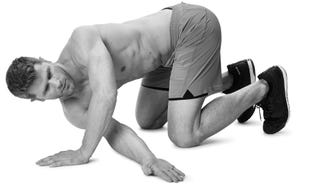
Mitch Mandel
Get on all fours, so your knees are directly under your hips and your hands are under your shoulders. Twist your torso to the right and reach across with your left arm as far as you can, driving the back of your hand into the floor. Keep your hips square with the floor and only move at the spine. As you loosen up, press your right arm into the floor to help you twist even farther.
Floor Scorpion
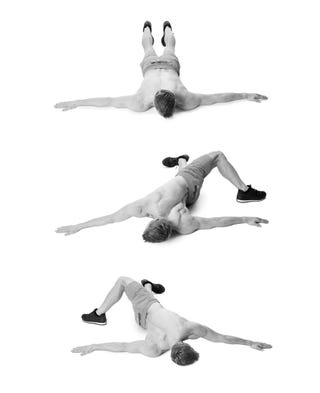
Mitch Mandel
Lie on the floor face-down, and extend your arms out to your sides at 90 degrees. Bend your left knee and raise your leg straight up behind you. Reach it across your body and plant your foot below your right arm. Try to drive your knee outward so your shin is vertical while you reach out with your left arm. The twist in your hips will make your left shoulder want to come off the floor, but try to keep it down. Breathe and relax, to get your shoulders as level as possible, while actively driving your left knee out to open your hip.
Figure Four Lat Stretch
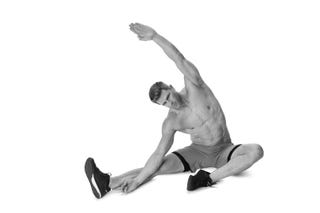
Mitch Mandel
Sit on the floor and tuck your right leg in so the bottom of your foot is on the inside of your left thigh. Extend your left leg out straight. Reach your left hand down your left leg and try to hook your index and middle fingers under your Achilles tendon, while you reach your right arm overhead and toward the left foot. You should feel a strong stretch in your right side.
Hamstring Bow
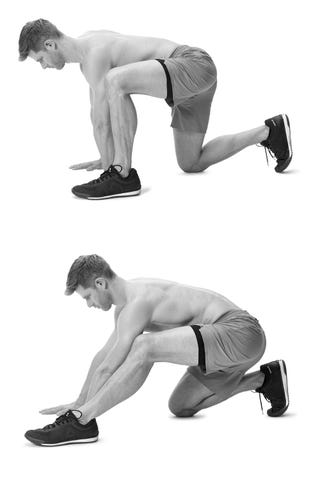
Mitch Mandel
Get on all fours, and then step your right foot forward and outside your right hand. Fight to pull your shoulder blades back and down (think proud chest). Keeping your foot and toes flat, extend your knee as much as you can while your hands push into the floor, so your hips move backward and you feel a stretch in your hamstrings. It will feel like you’re pushing yourself back onto your right butt cheek. Keep working to maintain the proud-chest position.
Shin Box with Extension

Mitch Mandel
Sit on the floor with both legs bent, one foot in front of you with the knee facing out and the other behind you with knee facing forward. Holding this position alone may be an intense enough stretch for you, but if you can, drive your knees into the floor and extend your hips to raise your but off the floor (don’t use your hands to help). Hold the top position, while keeping a tall posture with a proud chest.
Source: Read Full Article






